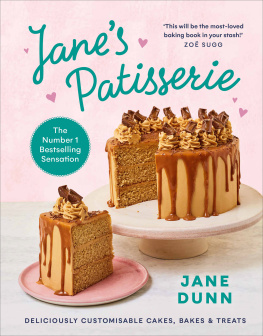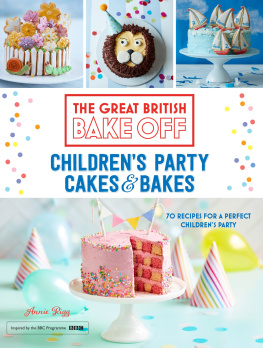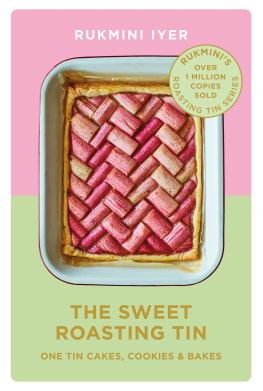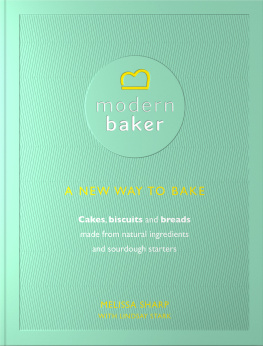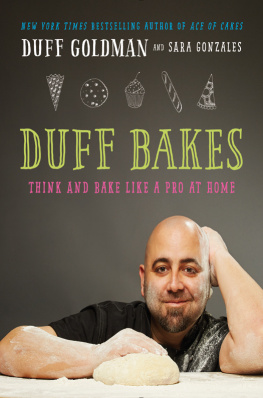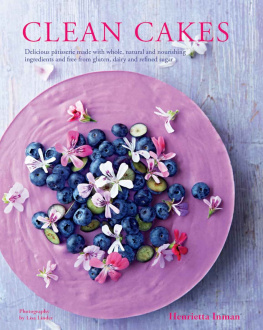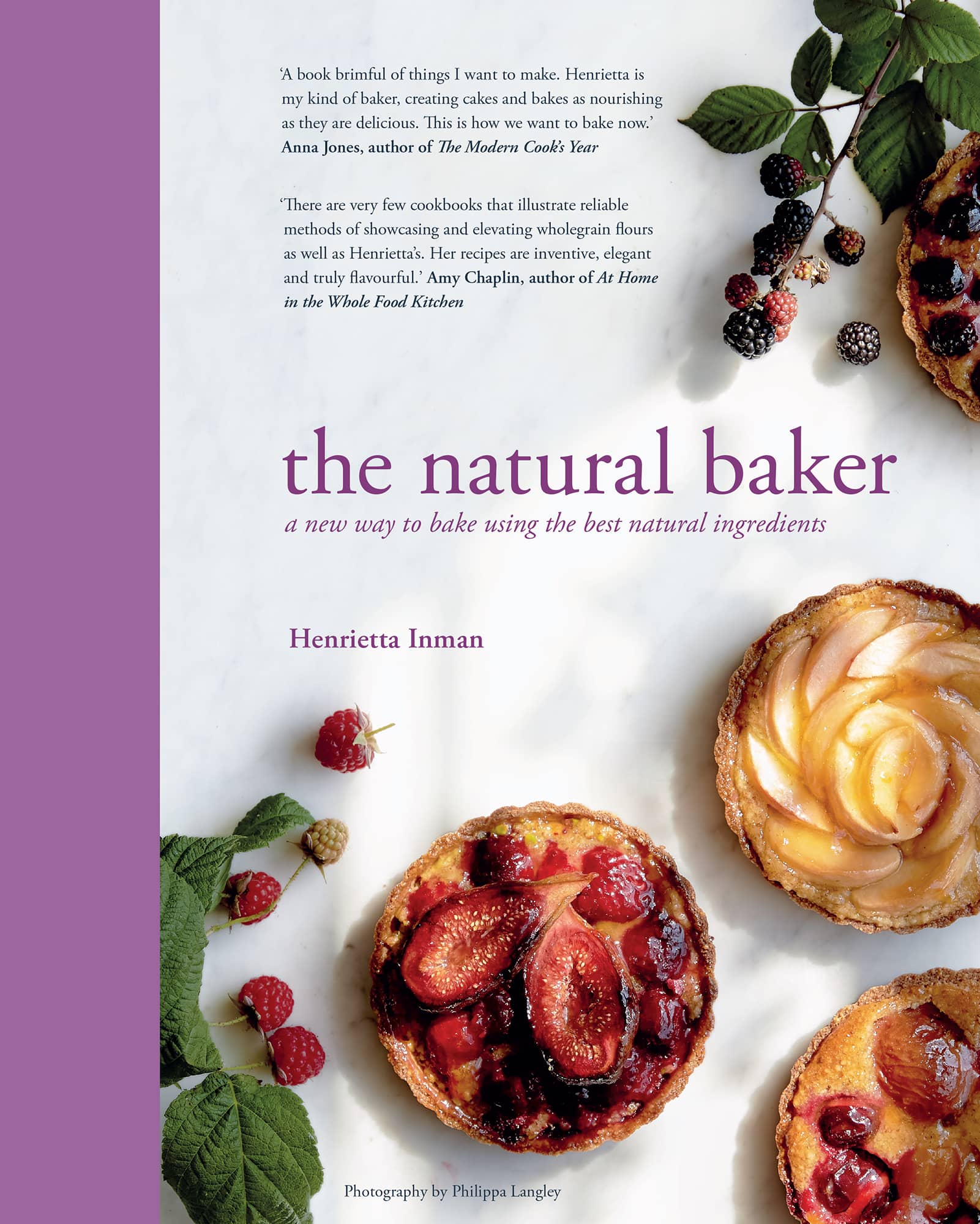the natural baker
a new way to bake using the best natural ingredients
Henrietta Inman


Design, layout and photography copyright 2018
Quarto Publishing Group plc
Text copyright 2018 Henrietta Inman
First published in 2018 by
Jacqui Small
An imprint of The Quarto Group
The Old Brewery
6 Blundell Street
London N7 9BH
T (0)20 7700 6700 F (0)20 7700 8066
The authors moral rights have been asserted.
All rights reserved. No part of this book may be reproduced, stored in a retrieval system or transmitted, in any form or by any means, electronic, electrostatic, magnetic tape, mechanical, photocopying, recording or otherwise, without prior permission in writing from the publisher.
Publisher: Jacqui Small
Senior Commissioning Editor: Fritha Saunders
Managing Editor: Emma Heyworth-Dunn
Senior Designer: Rachel Cross
Photographer: Philippa Langley
Editor: Lucy Bannell
Production: Maeve Healy
Food Stylist: Henrietta Inman
Prop Stylists: Linda Berlin and Henrietta Inman
Image between front cover and page 1: Lisa Linder
Digital edition: 978-1-91112-731-4
Hardcover edition: 978-1-91112-730-7
A catalogue record for this book is available from the British Library.
The cover shows (clockwise from top right): blackberry, blueberry and hazelnut tart; caramelized apple and almond tart; plum and almond tart; raspberry, fig and pistachio tart. All are variations of the recipe shown .
introduction
I have thought long and hard about how my natural way of baking evolved, and have come to realize that it was my upbringing in the Suffolk countryside that stands out as the greatest influence. Though I now live in London, I often return to Suffolk and it never ceases to inspire my work. Surrounded by fields of grains, growing and eating fruits and vegetables from our garden, local free-range eggs, dairy, meat and fish, I was able to understand from a young age where food came from, and I also learned to appreciate the quality of simple wholefoods. Learning how to cook with these ingredients has shaped the way I eat today, as well as my style of baking well, that and a bit of a sweet tooth!
As a keen artist, everything I bake just has to look beautiful, too. After all, we eat with our eyes first. When I lived in France and Italy as part of my degree, I tasted for the first time the great delights of ptisserie and pasticceria. So, at 21, I enrolled on a ptisserie scholarship, trained as an apprentice and went on to work in award-winning hotels and restaurants. After five years in London, I hankered after the countryside, so I moved home to Suffolk. I started a business selling what I baked at farmers markets, shops and pop-ups, teaching and making cakes to order. And, quite suddenly and unexpectedly, over a very short time, my baking took me in a new direction.
Back in the countryside again, I wanted to get all those wonderful ingredients with which I had grown up into my baking. I am sure that working very long hours in subterranean city kitchens had something to do with it, too. I was tired and apart from yearning for sleep just longed for really good, wholesome and nourishing food. That food made its way into my baking and what an adventure was to come.
Fortunately, wheat, spelt and rye flours were available locally, as were local oil, butter, yogurt and cheese, not to mention all the vibrantly coloured, flavour-packed fruits and vegetables. I wanted to apply a ptissires techniques and skills to baking with more natural and less traditional ingredients. As much as I adore classic ptisserie and its repertoire of sponges, pastries and doughs, I wanted to substitute its plain (all-purpose) flour and caster (superfine) sugar with more wholegrain flours, less-refined sweeteners such as local honey and brown sugars, and less-processed fats such as extra virgin cold-pressed rapeseed (canola) oil.
At the same time, many of my customers were asking for gluten- and dairy-free items, wanted to know how to bake them and, most importantly, how to make them taste good, complaining that so many of the alternatives on offer were unfulfilling in texture and flavour. This led me to other discoveries, of delicious, naturally gluten-free flours such as wholegrain buckwheat, quinoa, teff and brown rice, and to using more oats in my baking, as well as nut flours such as chestnut and almond. I also discovered virgin coconut oil and nut and seed butters and pastes. The wholegrain flours were nutty; the sugars richer and with caramel notes; the rapeseed (canola) oil had an earthy flavour while the coconut oil was lighter with a hint of vanilla.
I made these tasty grains, sweeteners and fats my core ingredients, then layered on to them the stand-out flavours of dark chocolate, citrus, spices, nuts, seeds, dried fruits and zingy fresh fruits, which I call my magic ingredients. At once, my cakes, biscuits (cookies), tarts, breads indeed everything I baked took on an excitingly new and interesting flavour dimension.
This book is a celebration of the vast array and diversity of all those natural ingredients, with recipes to help you become a natural baker in your own home. Eating well is so important for keeping us healthy and happy, and cooking fresh food from scratch, made with proper ingredients, will do just that. A bit of balance and variety are important, too, with many of us choosing lighter dishes during the week and allowing for a little bit more indulgence on some evenings and at weekends. There are all types of these recipes in this book, as well as simpler bakes for busy weekdays, or slightly more challenging projects for when you have more time to spare and many more. The ingredients are affordable and easy to find and the recipes are accessible and inviting.
Natural ingredients, for me, are simply those without additives, preservatives or colourings. They have been interfered with as little as possible between harvest and reaching the kitchen, such as wholegrain flours, less-refined cane and coconut sugars, other sweeteners such as raw honey and maple syrup, and real fats and oils. I also embrace products sourced seasonally and locally whenever possible. I believe that there are no other ingredients with more flavours or interesting textures than these natural foods, and so it simply makes the most sense to me to use them in my baking.
A quick note about how I put the book together and how to use it to best serve your baking. The chapter divisions are just a guide: there might be a recipe in Breakfasts that you feel like having for lunch, or even a dish from Desserts & Puddings that gives leftovers that you might enjoy for breakfast. And feel free to be creative: when I cook from a book, I follow a recipe the first time I make it; when I make it the second time, I can then adapt it to my tastes, if necessary, depending on the ingredients I have in my cupboard, what is in season, or if I am cooking for anyone with a special dietary requirement. I hope that you will do the same, and make these recipes your own. At the beginning of each chapter, youll find more about the recipes to come, the ingredients used, and how and why I combine them in the ways that I do.


